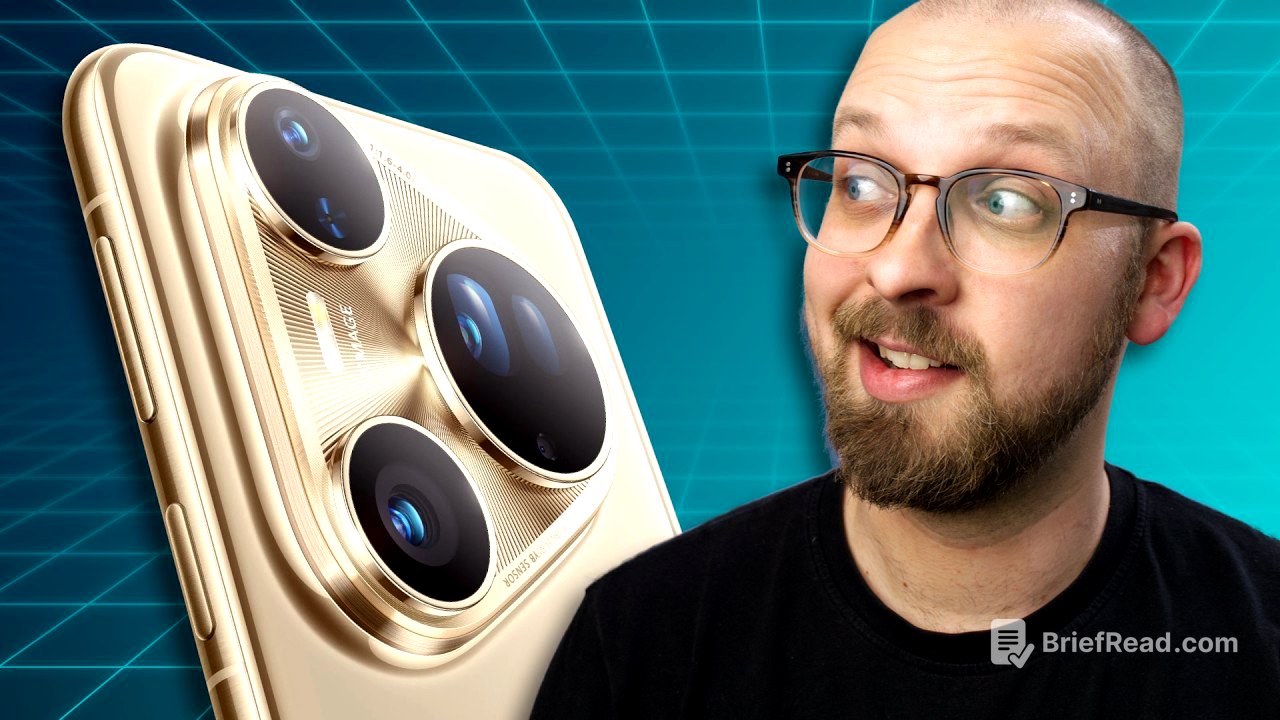TLDR;
This week's Friday Checkout covers Huawei's camera innovations, Apple's new "liquid glass" design language, and Microsoft's Xbox handheld UI on ROG Ally devices. It also touches on new releases like Ael and Kern's Luna earbuds and HP's Dimension Google Beam device, and includes a brief news segment covering Google Pixel 10, Nvidia's ARM chip, Denmark's switch to Linux, Wikipedia's AI summary pause, Amazon Prime Video's increased ads, Mistral's new AI model, and Qualcomm's new chip for smart glasses. The episode is sponsored by Insta360, showcasing their Link 2C webcam.
- Huawei's new phone features innovative camera tech, including a switchable telephoto lens and a main 1-inch sensor made in China.
- Apple's "liquid glass" design language for iOS and macOS draws parallels to Microsoft's Fluent design and may face adoption challenges.
- Microsoft's new Xbox handheld UI is featured on ROG Ally devices, offering a console-like experience on Windows-based handhelds.
Intro [0:00]
The host introduces the topics for this week's show, which include Huawei's new camera innovations, Apple's "liquid glass" design, and Microsoft's new operating system for gaming handhelds. The video is sponsored by Insta360.
Huawei camera innovation [0:19]
Huawei has launched the Pura 80 series phones in China, featuring notable camera innovations. The most expensive model includes a switchable telephoto lens, using a single large sensor with a periscope system that can switch between two fixed lenses: 3.7x (83mm) and 9.4x (212mm). This setup allows for a larger sensor (1/1.28 inch, 50 megapixels) compared to other smartphone telephoto sensors. While Sony has a continuous zoom periscope system, Huawei's fixed focal length lenses aim for sharper image quality. Huawei also teased their main 1-inch camera sensor being made in China, potentially by Smart Sense, indicating China's progress in camera sensor technology. However, Huawei's phones are thought to use the Kirin 9020 chip, which is considered to be behind the current technology.
Liquid Glass [2:15]
Apple introduced "liquid glass" at their WWDC conference, a new design language intended to unify the look across iOS, macOS, and other operating systems. The design turns UI elements into glassy 3D objects with shadows and reflections. The host finds the effects too aggressive and distracting in places, with readability issues due to transparency. This design overhaul aims to make digital UI elements feel like physical objects in 3D space, likely driven by the requirements of the Vision Pro. The host draws a parallel to Microsoft's Fluent design, introduced with Windows Mixed Reality and HoloLens, which also featured frosted glass and physical depth. The concern is that developers may not fully adopt "liquid glass" due to the prevalence of cross-platform apps, leading to a fragmented look.
Xbox handheld ROG Ally X [4:35]
Microsoft and Asus have announced new ROG Ally handhelds featuring Microsoft's new Xbox handheld UI. The hardware includes a cheaper version with an AMD Ryzen Z2A chip and a high-end ROG Ally X with an AMD Ryzen AI Z2 Extreme processor and maxed-out storage. Both have Xbox-style controllers and buttons, running an "Xboxified" version of Windows that boots straight into a full-screen Xbox experience. Microsoft claims improved performance and sleep/wake functionality, similar to a console. Despite the console-like experience, Windows apps like Discord, Battle.net, and Steam are still accessible, indicating that Windows is still running in the background. The host questions how well Microsoft can balance hiding Windows while still having it available.
Release Monitor [5:44]
Astell&Kern have released new earbuds called Luna, featuring handcrafted titanium housings made in Japan and uniplanar microplanar magnetic drivers, priced at $2,700. HP has launched the Dimension, a $25,000 Google Beam device, which uses light field displays with six cameras to render a pseudo-holographic version of the caller at 60 frames per second. The Google Beam license will be sold separately at an undisclosed price.
The Brief [6:35]
The Google Pixel 10 series is rumoured to come with Qi2 support and magnetic Pixel Snap accessories, including a magnetic charger, a charger with a stand, and a ring stand. Nvidia's new ARM chip, the N1X, has leaked with a strong single-core score on Geekbench, potentially challenging Intel and AMD in the laptop market. Denmark is adopting a national policy to replace Microsoft software with Linux and LibreOffice. Wikipedia has paused its AI-generated summaries pilot test due to editor protests. Amazon Prime Video is reportedly showing almost twice as many ads as before. Mistral has announced Majestral, its first reasoning model, with claims of faster reasoning speeds and strong multi-language support. Qualcomm has released the AR Plus Gen 1 chip for future smart glasses, enabling on-device AI tasks and improved power efficiency.
Sponsored by Insta360 [8:11]
The episode is sponsored by Insta360, showcasing the Link 2C webcam. The webcam features a half-inch 4K image sensor, a touchpad for zooming, a physical privacy shutter, adjustable tilt, and a magnetically attached design. It also includes a built-in microphone with voice isolation. The Insta360 app offers image quality settings and advanced features like voice focus modes, working on both Mac and Windows, including Windows on ARM laptops. There's also the Link, which has the same features but with a motorized gimbal for subject tracking. The first five people to order through the provided links will receive a 15% discount.









